By Robert Whiter
Recent years have seen a growing interest in the collecting of bayonets. What was once disdainfully described as the mighty sword’s poor relation now has its own niche in the family of edged weapons.
As stamp collectors try to collect the stamps of nearly every nation, the tyro bayonet enthusiast tries to add to his assemblage bayonets from most of the world’s armies.
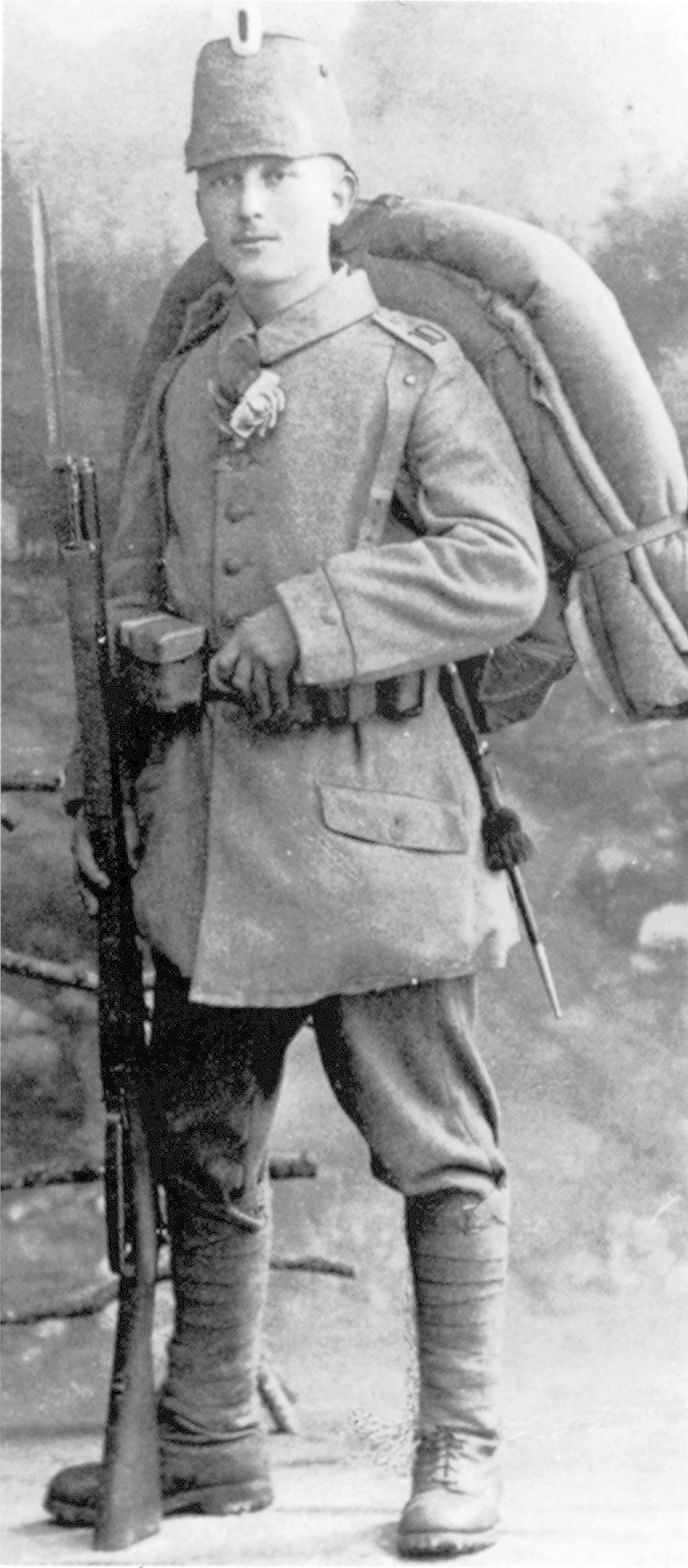
Sooner or later, however, the majority begin to specialize—and the German bayonet with its almost endless types, lengths, and pommel shapes presents a dazzling array to the sidearm student. The following should prove helpful to both the casual and serious collector.
Probably in no other country’s armed and, for that matter, civil forces, was the bayonet given such veneration as in Germany, where even the police forces, fire departments, and customs service were issued them. But whereas most nations regarded the bayonet as a necessary part of the soldiers’ equipment, Germany made it an important part of the uniform of many organizations, not the least of which was the military. Indeed it could be said that until the advent of the famous Stahlhelm (steel helmet) of 1916—and even then it wasn’t completely supplanted—the supreme martial symbol was the bayonet. Two notable examples are the Nazi General Assault Badge and the Close Combat Clasp, the bayonet sharing pride of place with a “potato masher” (hand stick grenade).
At the Lichterfelde Cadet School, which provided so many officers for the old Imperial German Army, an important display was a cadet soaring over the leveled interlocked bayonets of eight other cadets during an athletics demonstration. After many officers handed in their swords in 1915 it is significant that they began to wear a bayonet, mostly the model 84/98, generally decorated with their appropriate portepee or sword knot. This differed from the standard infantry troddel (tassel) and cavalry faustriemen (fist-strap), which were color-coded to denote the wearer’s subunit. The portepee, like the NCO’s troddel and the faustriemen, relied on the amount of silver thread and wire to indicate the wearer’s rank and position. Soldiers holding the rank of Fähhrich (Ensign) and above were entitled to wear the portepee. This was worn wrapped around the top part of the frog.
As is the case with several weapons, the bayonet’s origins are a little obscure. A number of historians go along with the fact that even if it didn’t see the actual birth, the town of Bayonne has a good claim in naming the weapon. Bayonne is a town in the French region of Basses-Pyrénées, about four miles from the Bay of Biscay; it was once famous for its wrought-iron twirls and scrolls. According to the memoirs of Maréchal De Puységur, a Bayonne-born commander, while fighting at Ypres, Belgium, in 1647, his troops thrust daggers down the muzzles of their muskets after firing and used them as spears. Others support the theory that the Baionniers, or French Bowmen, who were famous for their short swords, gave the bayonet its name. Another history has the peasants of Basque, while seeking bandits who had robbed their village, as the first to have rammed their sword hilts down the muzzles of their muskets when they ran out of ammunition. There is even the theory that the bayonet started life as the top of the musket-rest, and although very rare, examples have been found.
Be all this as it may, the first issued bayonets were of the plug type, the tapered handle being inserted into the muskets’ muzzles. Previously, most musketeers had to be protected by pikemen. The most important thing was for the bayonet to have a handle that fit tight enough so it did not fall out in combat but also could be removed without too much trouble when the musketeer wished to reload.
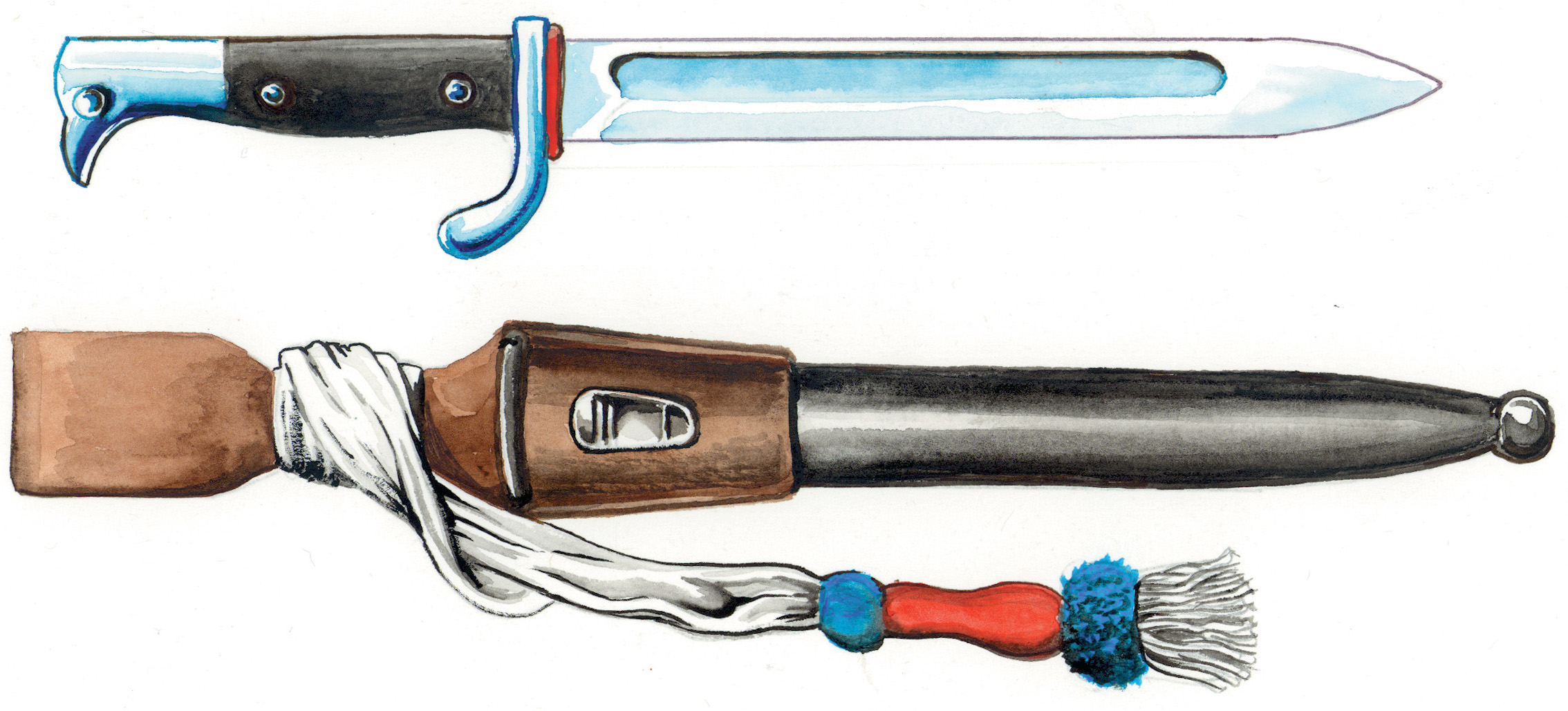
Indeed, one of the reasons given for losing the Battle of Killiecrankie (1689) was the inability of the Royal force to remove their plug bayonets when trying to repel the Jacobite counter-attack. It was no doubt due to many similar occurrences that various experiments were tried to remedy this fault, including the so-called ring-bayonet. This had loose rings on the weapon’s hilt that were supposed to fit around the gun’s muzzle. Its obvious disadvantages soon led to the development of the socket bayonet, which consisted of a slotted steel sleeve that fitted over the musket’s muzzle (the original models were split so that the diameter of the sleeve could be altered to fit the varied barrel sizes), the foresight engaging in the “L” or diagonal-shaped slot and locking it in place.
Later models added a rotating ring to the sleeve, thus ensuring a more secure fastening when the bayonet was fixed. The blade in most cases was triangular, although flat and other shapes were tried; it was offset and attached to the sleeve by an elbow. Russia was one of the last countries to use a socket bayonet. Its Moisin-Nagant model 1891 had a cruciform blade with a screwdriver-shaped point that could be used to strip the rifle. The British also resorted to a form of socket bayonet with their Number Four, Lee-Enfield rifle.
It is interesting to note the effect on the rifle’s accuracy when the bayonet is attached to the barrel. When wartime necessity demanded speedy production, the rather complicated backsight was omitted from the rifle and two simple battle sights were fitted instead. The soldiers were instructed to make allowances when aiming with the bayonet fixed. The previous British rifle, the Number 1, Short Lee-Enfield MK III originally had a modified Pattern 1888 MK III bayonet (known as the Patt 1903), which had a 12-inch double-edged blade. This was replaced by the more familiar 1907 model, with its 17-inch single-sided blade and hooked quillon (meant to help wrench an opponent’s rifle from his hands), the latter being eventually removed. Both patterns of bayonets were attached to a projecting stud and sword bar on the nose-cap, thus leaving the barrel free and without the influence of the bayonet.

The Germans, recognizing the vibrations that are set upon the barrel when the rifle is fired, abolished the muzzle ring. They discovered that the slot also should be lengthened to obtain sufficient rigidity when the bayonet was fixed. One of the models that was so modified was the 71/84, often regarded as the first true knife bayonet (although some would give that honor to the American Dahlgren bayonet of 1861), the design of which can be observed on most successive German bayonets. Some exceptions will be found, mainly among the all-metal ersatz types, several of which were made with open rings. Likewise, Germany made full use of captured bayonets, converting them to fit their own rifles, in some cases even reaming out the muzzle rings. Adapters were also made for captured Russian Moisin-Nagant and French Lebel rifles, enabling them to accept German bayonets.
It is interesting to note that because muzzle-loading muskets and later most rifles carried their ramrods and cleaning rods underneath the barrel, generally speaking, bayonets were designed to be fitted on the side of the barrel. This was true as late as 1888, with the so-called “commission” rifle still having the “sword bar” on the right-hand side. About this time bayonet hilts began to be hollowed out to receive the protruding heads of the cleaning rods. This, together with replacing the “sword bar,” enabled the bayonet to be fixed beneath the barrel, giving better balance.
Propaganda plays a very important part in wartime, with both sides accusing the other of various atrocities, no doubt some being true, others downright inventions or a distortion of the facts. Coming under the heading of the latter was the “frightfulness” of the Germans during World War I in using the saw-backed bayonet. The Allies claimed it was used only to cause unnecessary wounds; they conveniently forgot that “pioneer” and “engineer” companies in most armies had been issued saw-backed bayonets and swords. Their use was obvious: constructing and demolishing wooden fortifications, bridges, etc. Nevertheless, a directive was supposedly issued that any German soldier caught with one would be shot on the spot. Whether or not true, the fact remains that lots of bayonets were found with the saw teeth ground off. In fact, the Germans were loath to use them because the saw back made it hard to withdraw after a thrust!
Several varieties of the Mauser bayonet can be found with an extra-thin steel shield covering the tops of the wooden hand grips. These were specially designed for the Mauser (KAR 98) Carbine. When the bayonet is fixed, the hilt projects directly under and in front of the muzzle. Without the shield it was found that the wooden grips got charred when the rifle was fired.
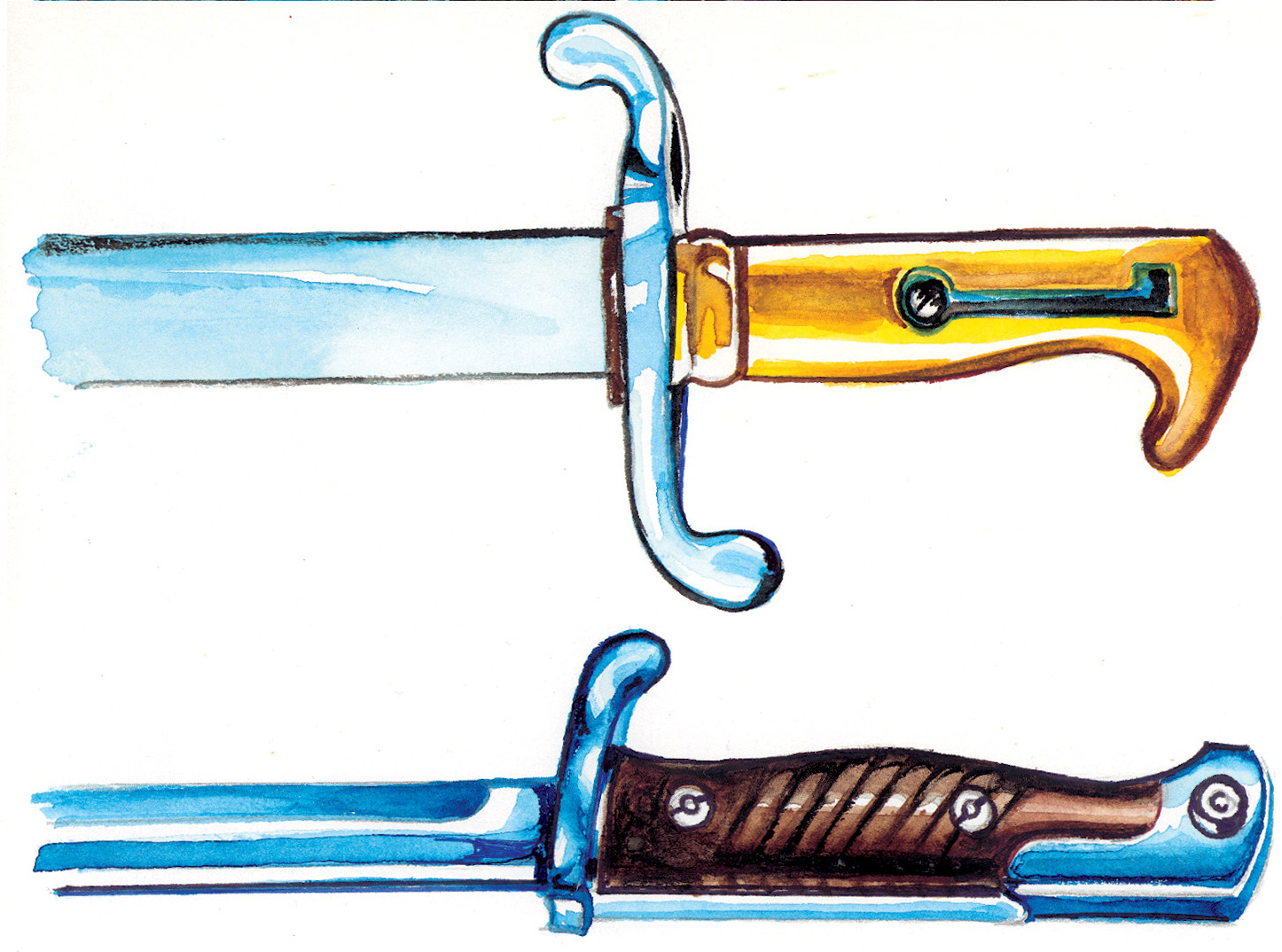
The Mauser rifle 98, the carbine KAR 98 (actually a short rifle), and the true carbine 98 all took bayonets with the same fitting—approximately 40 different types have been recorded. The longest, with a blade of 21 inches, appears to be the original model; whereas the shortest, which is a combination trench knife/bayonet, has a blade of 5 3/4 inches. Another type of bayonet, thus far not mentioned, was the Hirschfänger, which roughly means “hunting knife or dagger.” It had the flat side of its hilt slotted to engage the corresponding projecting bar on the rifle barrel and was issued to Jäger troops in the 1800s.
These crack rifle units of the German Army (Jäger and Schützen Batalions) were originally formed from hunters and skilled marksmen. When in dress uniform the Garde Jäger and Garde Schützen were allowed to wear a special dress Hirschfänger (bayonet-style dagger). Like those of the guard regiments, it had the Star of the Order of the Black Eagle adorning its hilt. The guard regiments of the old German Army had this device, either on its own or superimposed on the eagle, for their shako and helmet plates. Even the ordinary serviceman was allowed to wear a dress bayonet.
These dress bayonets were not issued, but had to be purchased privately. In the main they followed the style of the standard issue, but with certain embellishments. The pommel was more pronounced and shaped like an eagle’s beak with the press stud depicting the eagle’s eye. The hilt, with its upswept quillon and blade, was nickel plated. If the hilt was slotted (not all dress bayonets were) it would have a piece of felt inserted; this together with the ricasso washer (felt pad placed between the hilt and the blade when the bayonet was in the scabbard), would be in the color of the service. The grips were either made of staghorn or black, checkered plastic.
Obviously, the more one paid for such an article, the more ornate it would be. The makers listed in their catalogs a wide range of added refinements, including chasing and engraving with oak leaves and other martial emblems. The owner’s name or his regiment could be etched on the blade against a blue panel. Likewise if the bayonet was to be presented for some special accomplishment, such as being the best shot or as a token of esteem, this could also be engraved on the blade. The latter was particularly popular if the soldier was leaving the service, the favorite sentiment being: Zum Erinnerung ein mein Dienstzeit (In memory of my military service).
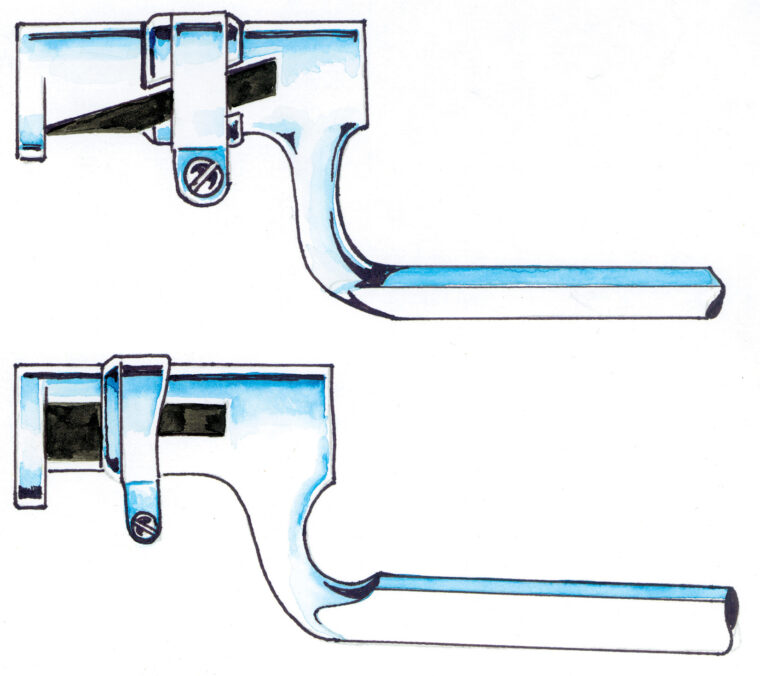
Obviously these presentations and some of the dress bayonets are the most sought after by collectors and are expensive, depending on condition. Notably, in the latter period of the Third Reich quality suffered. This is particularly evident with the inferior nickel plating used. A nice specimen, with engraved blade, may fetch $500 or more. In most cases, the collector does not have to worry about fakes (with the possible exception of blade shortening).
Various governments over the years have sometimes modified their countries’ bayonets by reducing the muzzle ring or shortening the blade. A case in point was in the U.S. 1905 (and 1942) model. Originally, this had a 16-inch blade, but in 1942, large numbers had their blades reduced to 10 inches by request of the U.S. Cavalry Board.
What the collector has to look out for is the unscrupulous dealer who, having a large number of bayonets with the same pattern, seeks by shortening some of the blades to increase the variations in his stock. Collectors should remember the old adage: “Shop around!”
At a recent military show, I saw a Japanese Arisaka 1897 bayonet (quite a common type) marked at $50.00. At the same show, but at a different dealer’s table, the same model, in much the same condition, was $35.00! The average price seems to be $35-50 for the normal-issue bayonet. Discounting the dress and presentation examples, it is pretty obvious that some bayonets are a lot more rare than others. A good example is the British 1907 Short Lee-Enfield bayonet with its carved quillon intact (the curved, or hooked, quillon was ordered to be removed in 1913). Some time ago, I was offered one for $350. I refused, but I did buy a Russian Mosin-Nagant 1891 rifle. Then I began looking for the requisite bayonet. After attending many military shows I found and bought one for $45.00. Even then, it turned out to be made in the United States for the Russians. Two weeks later I was given one as a present by a friend who had picked it up at a garage sale for a song!
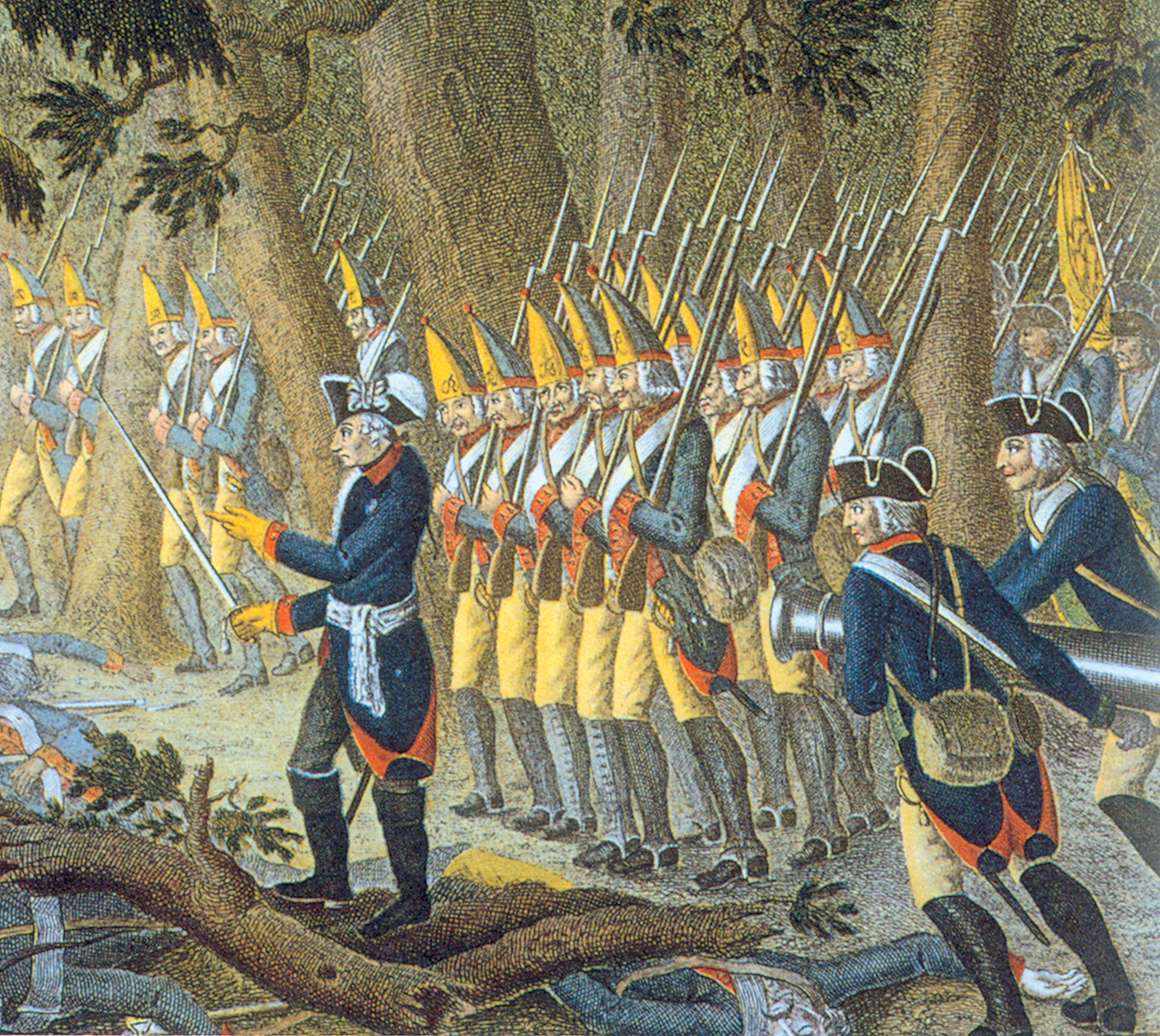
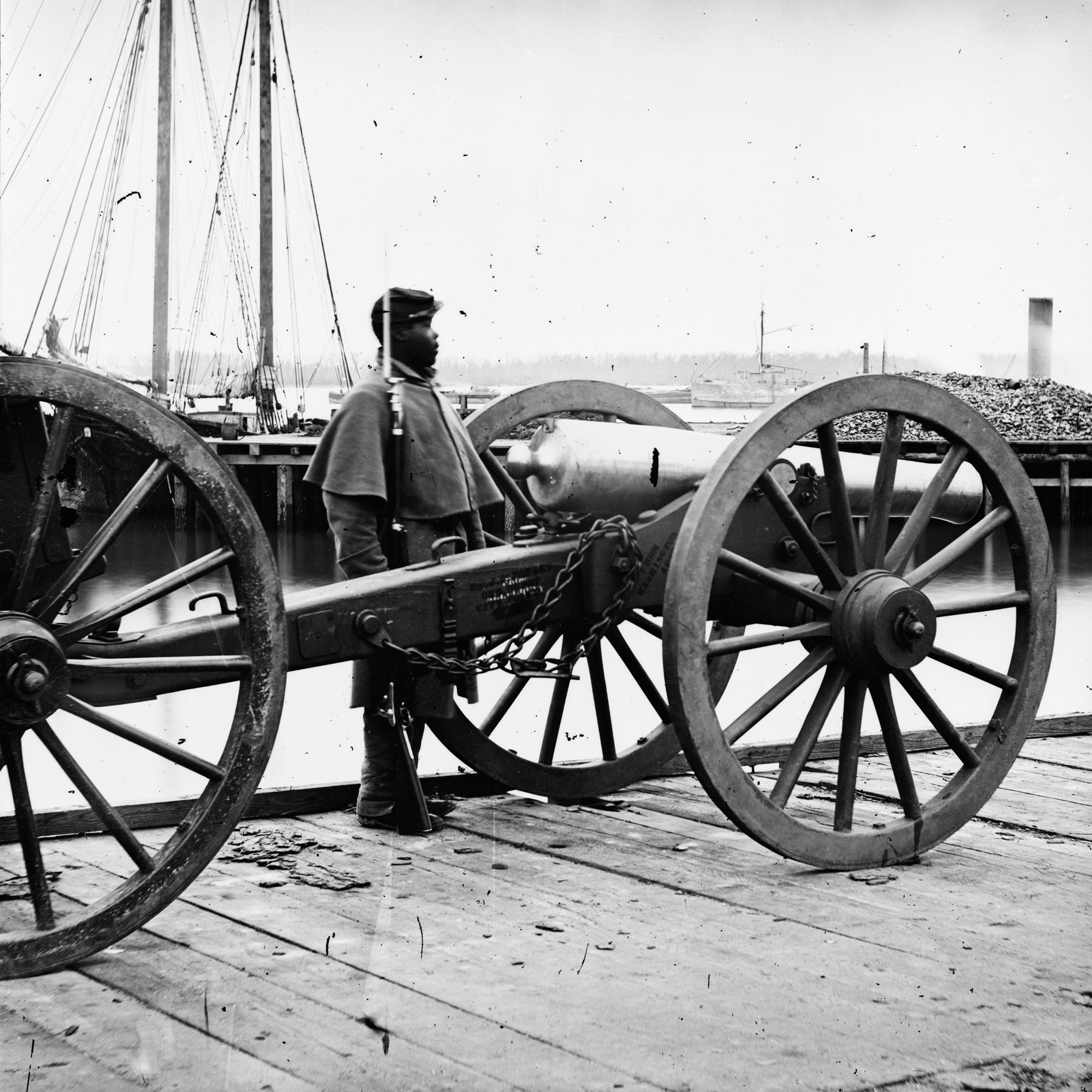
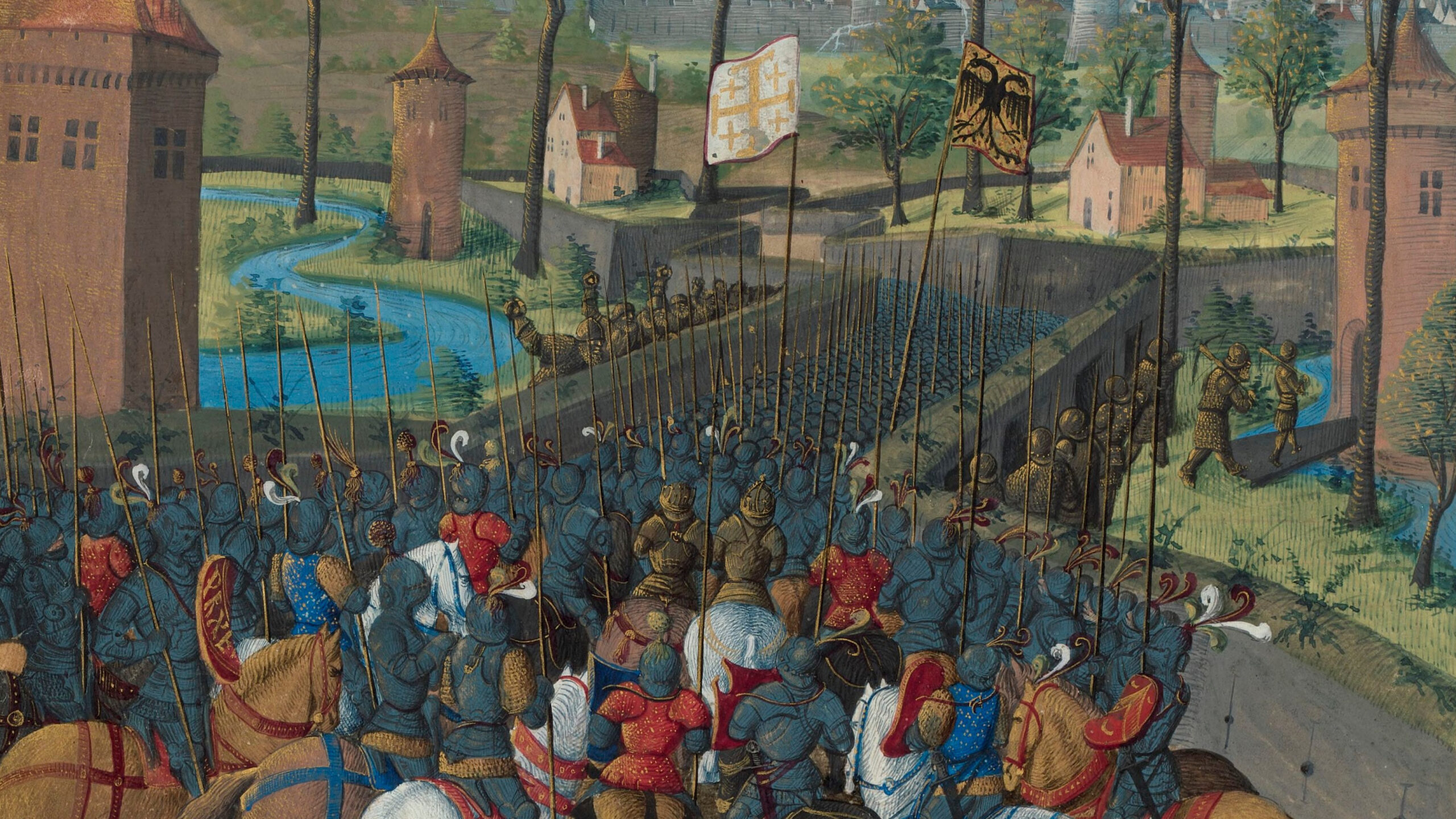
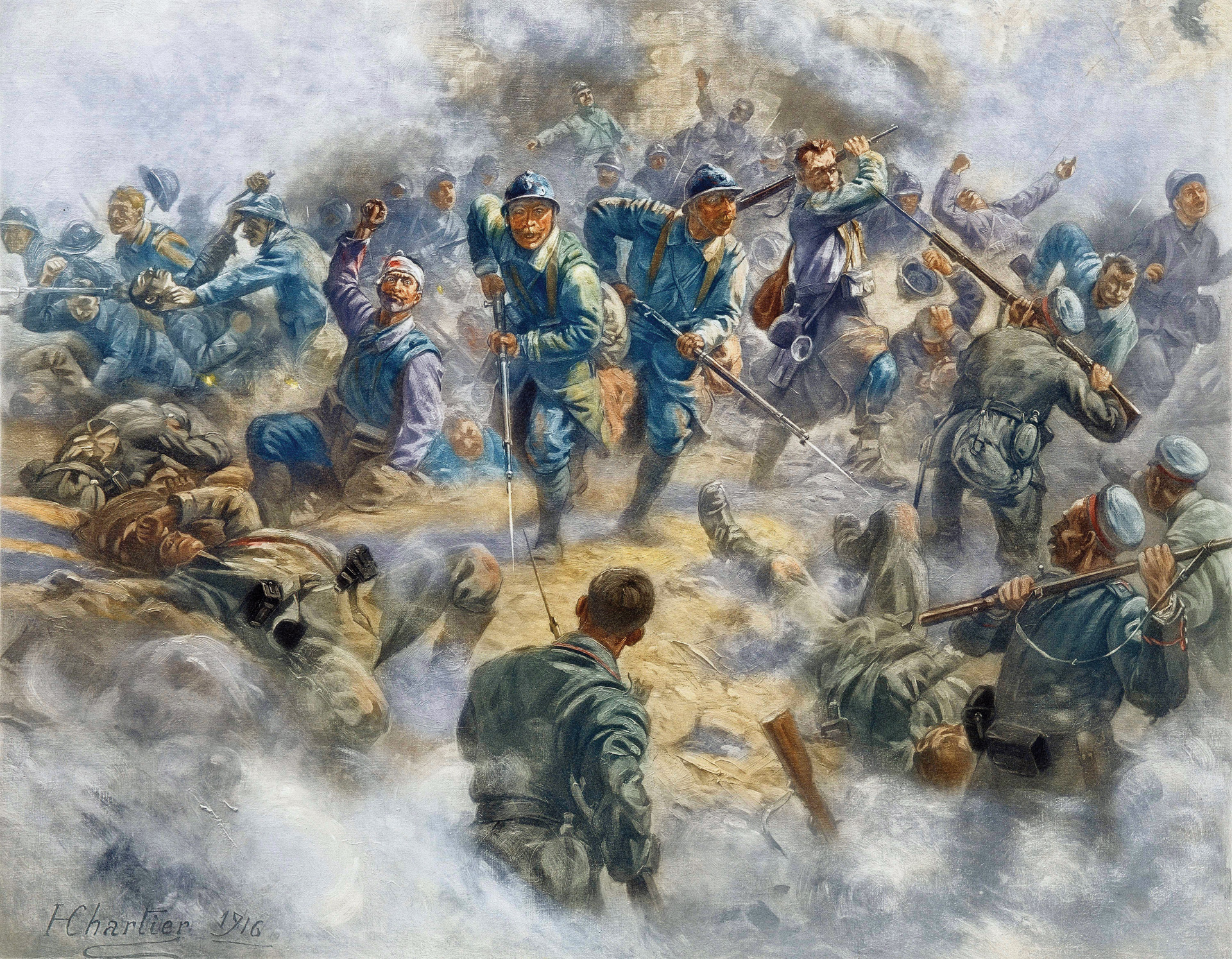
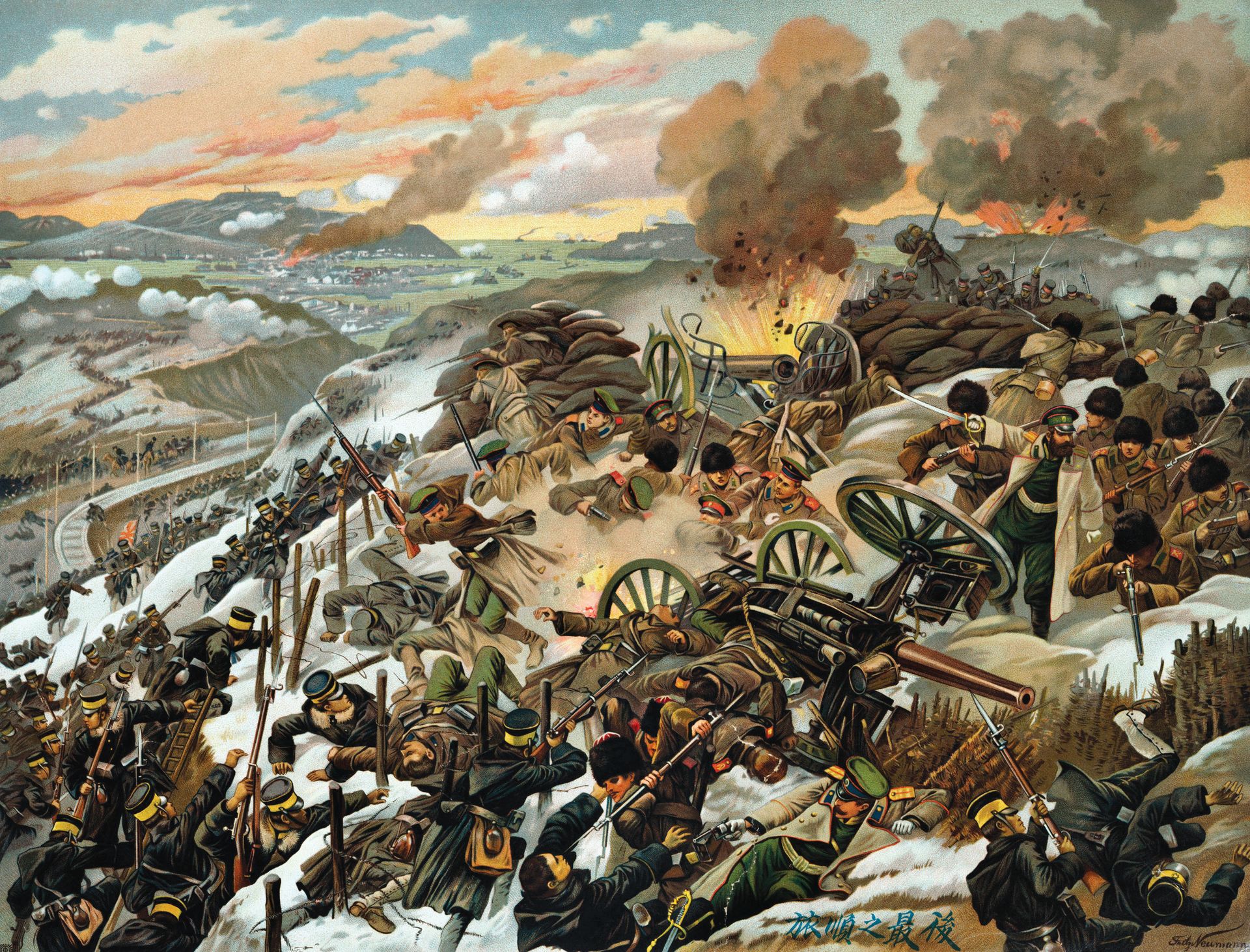
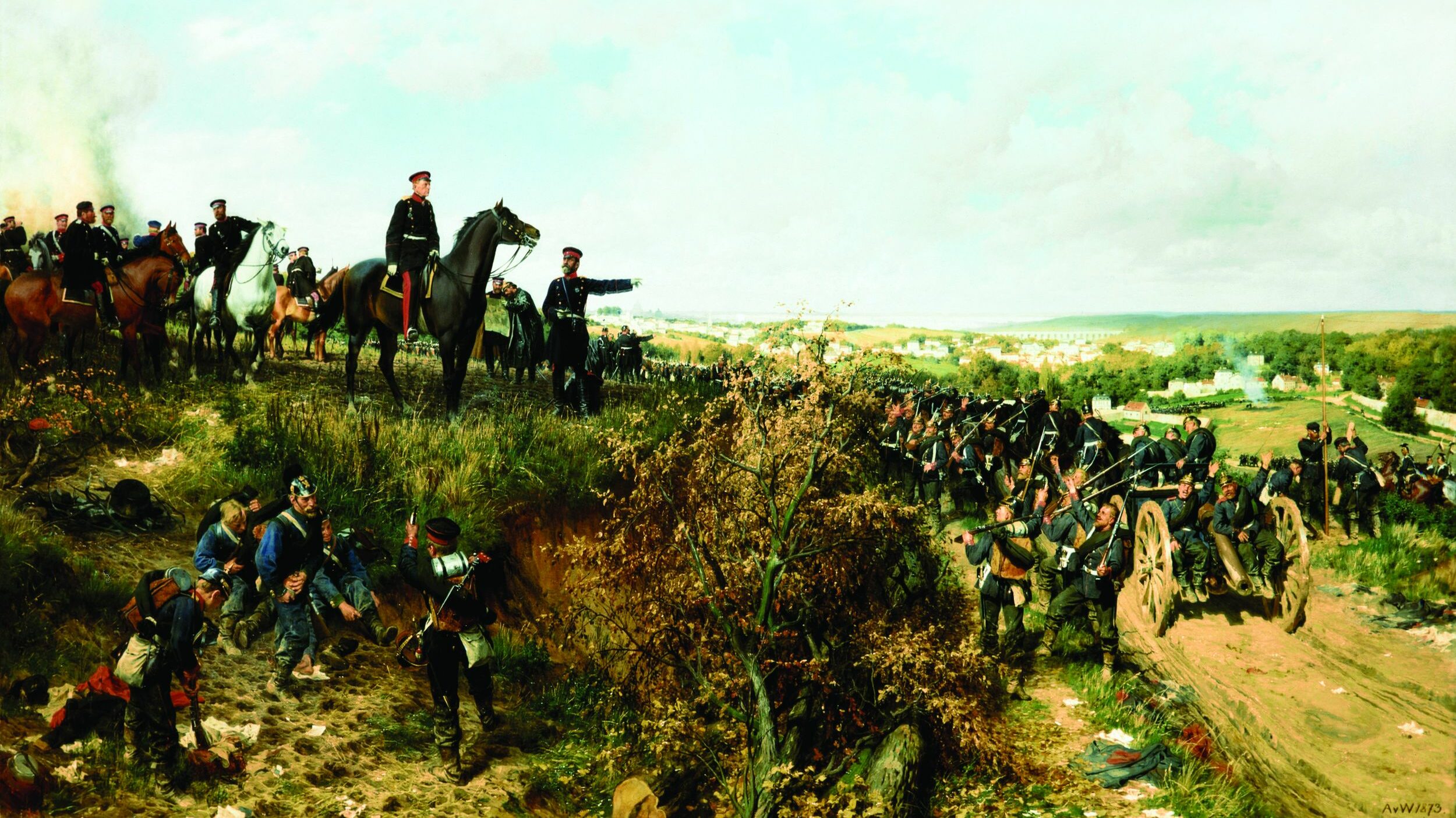
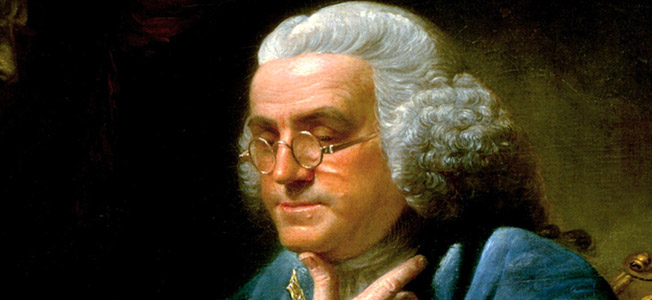
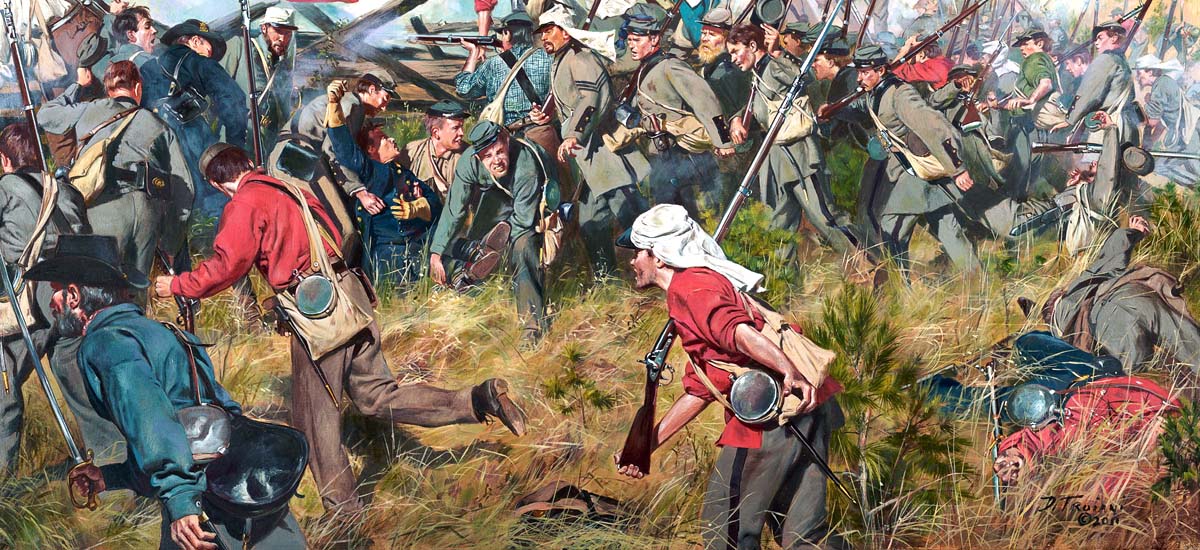

Probably my favourite bayonet I’ve ever owned was an Australian Owen SMG bayonet with original olive drab canvas frog. I regret to this day selling that. It was a truly magnificent specimen.